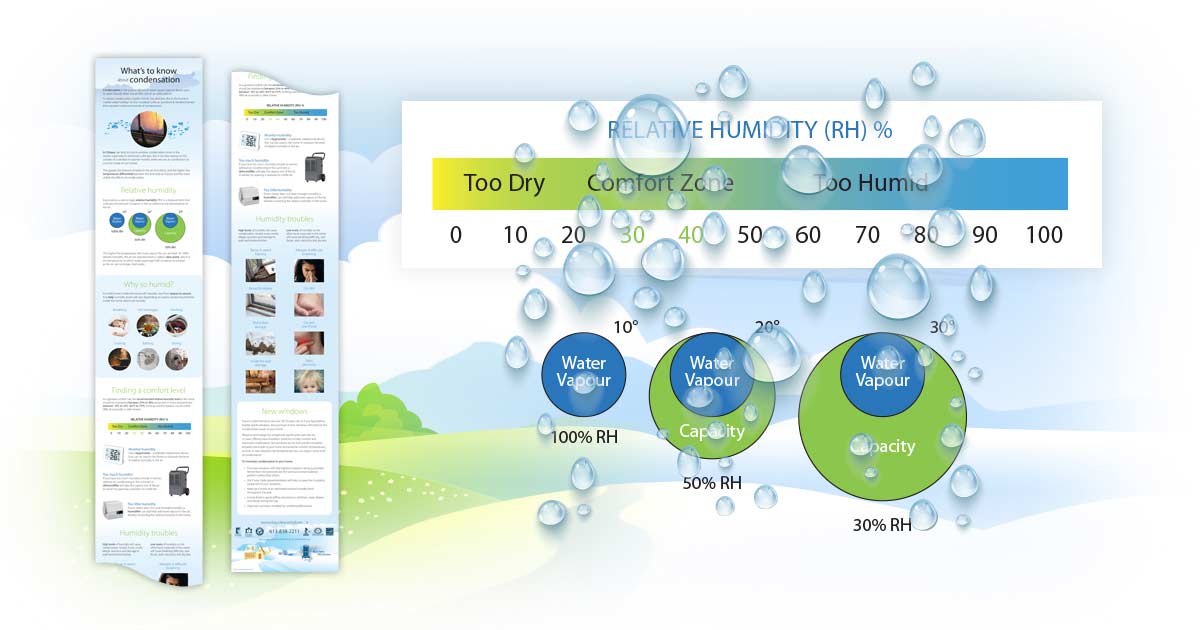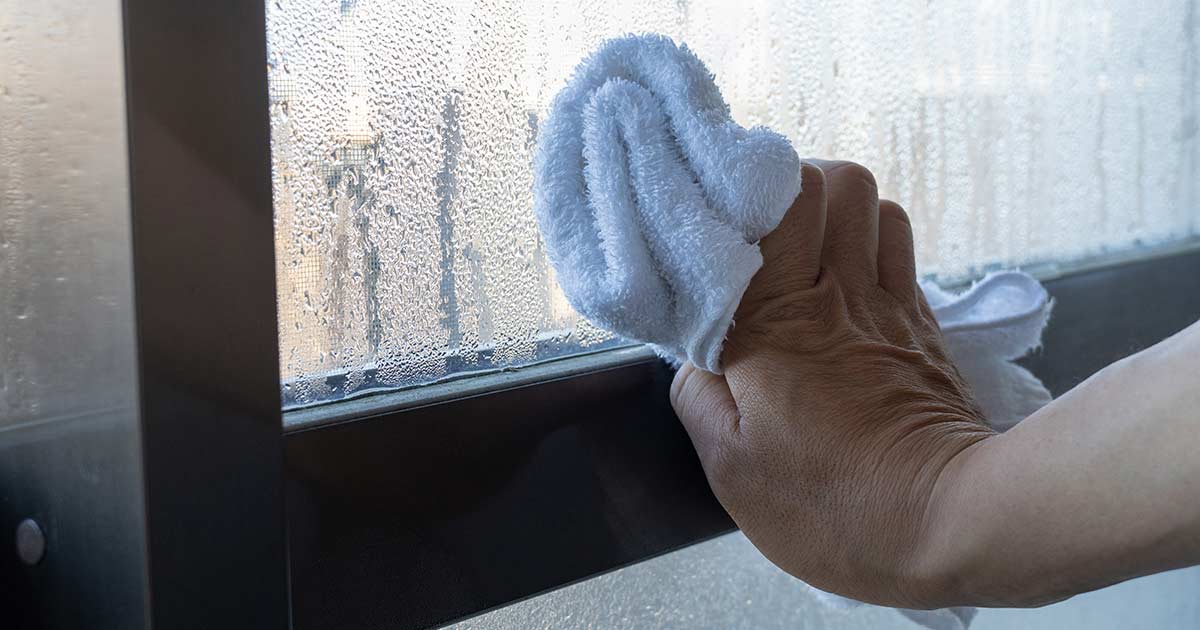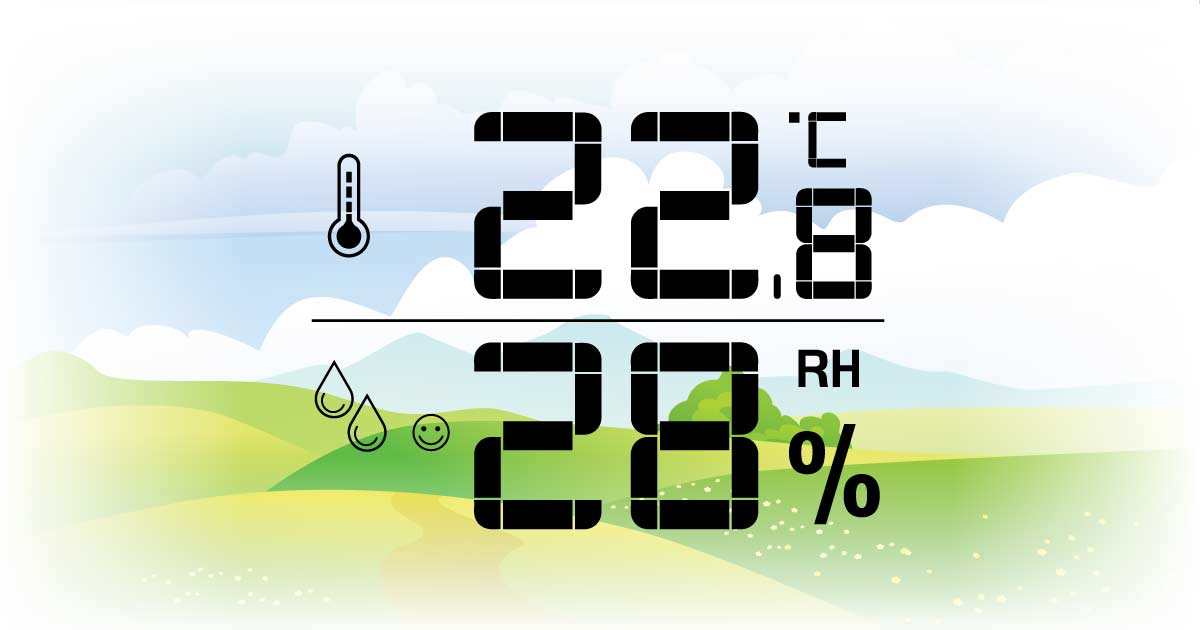Insights > Article > Posted: 2025-Mar-20, Updated: 2025-Mar-31
Condensation
Understanding Causes

The Science Behind Condensation and the Role of the Dew Point
Condensation occurs when moisture in the air transforms into visible liquid droplets on surfaces like your windows, closely tied to a fundamental concept called the dew point. Understanding the dew point is essential for grasping the mechanics of condensation.
Dew Point Unveiled
The dew point represents the temperature at which the air becomes fully saturated with moisture, leading it to release water vapour as minuscule droplets. Visualize it as the tipping point where the air can no longer retain all the moisture it contains, giving rise to condensation.
Here's the mechanism: When warm, humid indoor air encounters the comparatively cold surface of your windows, it cools down. As it cools, it gets closer to its dew point, the temperature at which it can no longer hold all the moisture it carries. At this juncture, the surplus moisture starts to condense, forming the familiar droplets on the window.
Balancing Temperature and Humidity
The larger the temperature contrast between your cosy indoor environment and the chilly outdoors, the nearer the indoor air gets to its dew point. This temperature difference significantly impacts the intensity of condensation. If the indoor temperature is significantly higher than the dew point, you're more likely to witness condensation, particularly during Ontario's cold winters.
To curb condensation and maintain indoor comfort, it's crucial to narrow the temperature gap and manage indoor humidity levels. This entails effective home insulation, improved ventilation, and the use of tools like dehumidifiers to regulate air moisture content.
Temperature and Humidity Dynamics
Temperature and humidity levels inside your home compared to the exterior play pivotal roles in the condensation process. A significant temperature contrast between the cozy indoors and the cold outdoors increases the likelihood of condensation. This can result in moisture accumulation on your windows, frames, and sills, and can even spread to your walls and floors in extreme cases.
What is Relative Humidity?
Relative humidity (RH) measures the amount of moisture or water vapour in the air compared to the maximum amount the air can hold at a particular temperature. It is expressed as a percentage and indicates how close the air is to being fully saturated with moisture.
In a home, relative humidity plays a crucial role in several aspects:
- Comfort:
The ideal indoor relative humidity level for human comfort typically falls within a range of 30% to 50%. Maintaining RH within this range helps ensure that the air in your home feels neither too dry nor too muggy. This contributes to a more comfortable living environment. - Health:
Indoor relative humidity can significantly impact health. Very low humidity levels can lead to dry skin, irritated eyes, and respiratory discomfort. Conversely, excessively high humidity can foster the growth of mould, dust mites, and other allergens, which can exacerbate allergies and respiratory issues. - Condensation:
Relative humidity plays a vital role in the formation of condensation. When warm, humid indoor air encounters cold surfaces such as windows or walls, it can lead to condensation. Excessive condensation can result in moisture accumulation on windows, frames, sills, and even walls and floors. This can lead to structural damage and mould growth if not managed properly. - Energy efficiency:
The level of indoor relative humidity can affect the efficiency of your home's heating and cooling systems. For instance, air with higher humidity feels warmer, which can lead people to use air conditioning more. Conversely, in dry conditions, people may use more heating. Balancing relative humidity can help optimize energy usage and reduce utility bills. - Home maintenance:
Extreme levels of humidity can damage a home's structure and materials. Very high humidity can lead to wood rot and damage to other materials, while very low humidity can cause wood to shrink and crack. This can impact wooden floors, furniture, and the structural integrity of the home.
Understanding the Culprits
- Temperature disparities:
When the indoor environment is markedly warmer than the outdoors, condensation becomes more prevalent. The greater the temperature difference, the more intense the condensation. - Humidity levels:
Areas with elevated humidity levels, like bathrooms and kitchens, are particularly prone to condensation. Higher humidity means more moisture in the air, raising the chances of condensation formation.
Preventing and managing condensation
To combat condensation and mitigate its effects, consider these strategies:
- Enhance insulation:
Improve your home's insulation to reduce temperature gaps between indoor and outdoor environments, which can be achieved through better windows, doors, and insulation materials. - Proper ventilation:
Adequate ventilation, especially in humidity-prone areas, is crucial. Utilize exhaust fans in bathrooms and kitchens to enhance air circulation and reduce humidity. - Dehumidifiers:
Installing dehumidifiers in areas with high humidity levels can help maintain optimal indoor humidity. - Sealing leaks:
Inspect and seal any gaps or leaks around windows and doors to prevent cold drafts. - Energy-efficient Windows:
Consider upgrading to energy-efficient windows, which are less susceptible to temperature differences and thus reduce the likelihood of condensation.
In conclusion
Comprehending the science of condensation and its causes is vital to effectively address this common issue. By implementing preventive strategies, you can maintain a comfortable, safe, and energy-efficient home during Ontario's frosty winters.
Related articles
Ready to tackle window condensation?
If you're eager to discover how we can assist you in combating window condensation in your home, don't hesitate to get in touch. Reach out to us today, whether you prefer to give us a call or request more information through our convenient contact form. We're here to provide answers and solutions to all your questions.
Fighting the Climate
Battling the Sun
INFOGRAPHIC
Understanding Causes
Why Take it Seriously?
How to Prevent
Year-round Semblance
New Window Fix?
Try Our Dewpoint Calculator
Humidity/Temp. Guidelines







